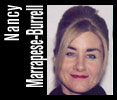 | |
 |

|
| Sunday, February 10 Updated: February 11, 1:25 PM ET Game day: Video work, meetings and lots of coffee By Nancy Marrapese-Burrell Special to ESPN.com |
||||||||||||||||||||||
|
Ever wonder how an NHL coaching staff prepares for a game? ESPN.com asked Nancy Marrapese-Burrell to chart a typical game day for the Boston Bruins coaching staff:
Morning
After their workout, the coaches -- including assistant Wayne Cashman -- meet with video coordinator Nickolai Bobrov. They go over opposing team's tendencies 5-on-5, as well as on the power play and penalty kill, which they've gathered from videotaping previous games.
Prior to the pregame skate
Pregame skate Players are creatures of habit and like to do the same routine -- workout, warmup, passing and shooting with the goalies and then breakouts. The walk-through lasts for less than a half hour. Then, Ftorek addresses the team for the first time. He'll critique the players on their performance in their previous game and explain what is going to be necessary to be successful that night from both a tactical and mental standpoint. Ftorek finishes the skate with a 90-second spiel on what's important -- it's less X's and O's and more philosophy on how they want to approach the game. They want the players to start thinking about the game, the power play and penalty killing segment they've talked about that morning. They want the players to be familiar with their strategy and to have an awareness of who they're playing that night and what their tendencies are. If they are playing back-to-back games on the road, they may decide not to skate and will extend the afternoon meeting by five minutes.
After pregame skate The coaching staff returns to the rink between 4 o'clock and 4:30 p.m. Hughes and Cashman start mainlining coffee, drinking three or four cups apiece. They ask Ftorek if he'd like some, knowing he doesn't drink coffee. He declines. Then the coaches prepare for the team meeting which begins roughly 45 minutes before the warmup.
Pregame meeting If the normal meeting is at 5:50 p.m., on the second night of back-to-back games, they'll likely start the meeting five minutes earlier because there is more ground to cover. After the meeting, the coaches exit the room, leaving the players alone, and find a place to sit and wait for the game -- which they all agree is the toughest part of the day.
Pregame warmup Hughes and Ftorek discuss who might be under the weather -- due either to injury or illness -- and how many minutes each player will play. They plan who will play in what situation and roughly how many minutes they'll log.
Game time Communication on the bench is constant. Hughes, who handles the defensemen, will reinforce points, such as moving the puck, where to move it, where not to move it, how to play in the neutral zone. For example, one player might make a pass and if Hughes likes it, he'll tell the other defensemen on the bench that that is what they're looking for. Ftorek does the same with the forwards. There's a mindset of how they want the team to think in different areas of the rink during different points of the game. In the defensive zone: They want the defensemen to get their stick on the puck. The first player closest to the puck is very aggressive. But it's a patient, controlled aggressiveness. It's playing good angles and having good positioning. They are coached to move the puck from one player to another, but if they don't have a clear pass, they are to clear the zone using other means -- i.e. banking if off the boards -- while keeping it out of harm's way. In the neutral zone: The coaches ask the defensemen to be patient and concentrate on their positioning. Because they play a position game which focuses more on areas, the 1-2-2 is effective (the center forces the puck, while the wingers set up around the opposition's blue line and the defensemen play a normal position). All five players work together and layer the neutral zone to prevent the opposition from penetrating it. In the offensive zone: The defensemen are encouraged to be active yet patient so as not to give up odd-man rushes. A great many turnovers occur at the offensive blue line because someone gets a little anxious and is caught out of position. The coaches want them to think offense, but want them to be smart by making plays that have a high percentage of reward, rather than a low percentage of risk. If they have the puck, but don't have a shot, they're coached to send it down low in the corner. If they have a shot, then they are encouraged to take one. They are encouraged to play in a North-South direction (up and down the ice) rather than East-West. They want to transition quickly from defense to offense. While the coaches prefer they do it with one outlet pass, two passes -- defense to defense to a player coming through a seam -- are OK, too. They don't want to play an East-West style unless that's the only thing available. The forwards are the strength of the team, so they want to spend as much time as possible in the other team's zone. Intermissions: Ftorek speaks briefly to the team, and addresses no more than three points. His objective is to reinforce ideas or make an adjustment. The topics range from finishing checks to keeping pucks deep in the offensive zone, from play in the neutral zone to breaking out of their own zone. Then they are told who will start the next period. It's short and sweet.
Postgame Nancy Marrapese-Burrell of the Boston Globe is a regular contributor to ESPN.com. |
| |||||||||||||||||||||



